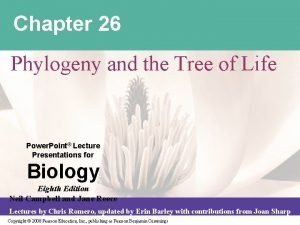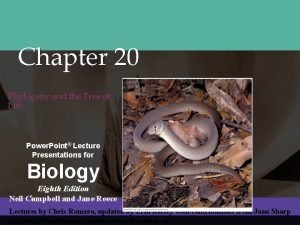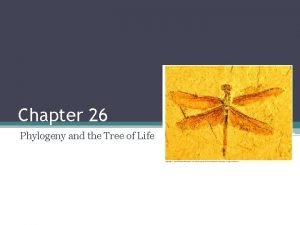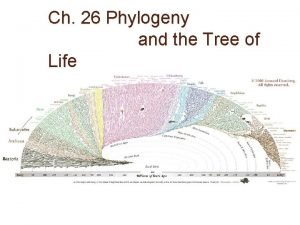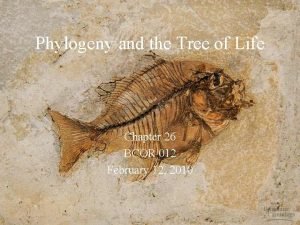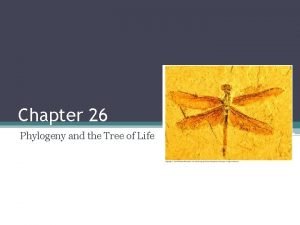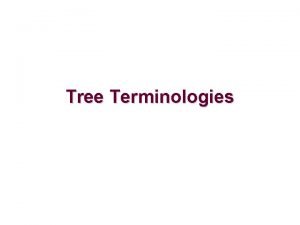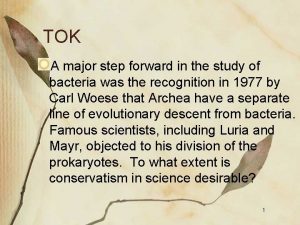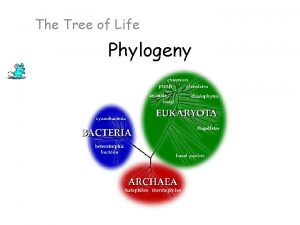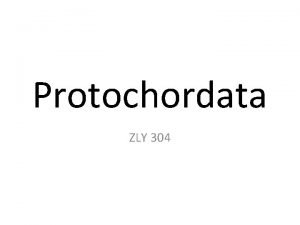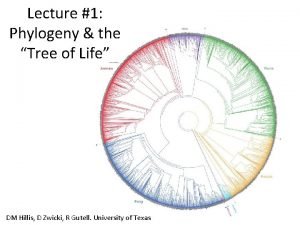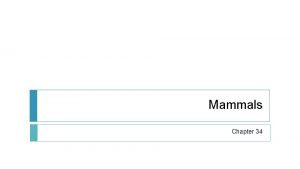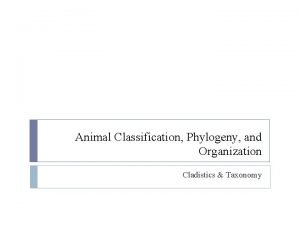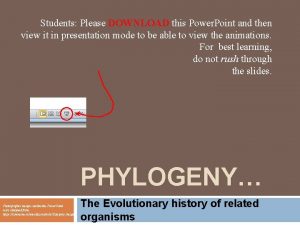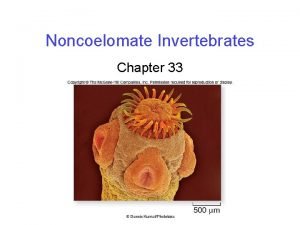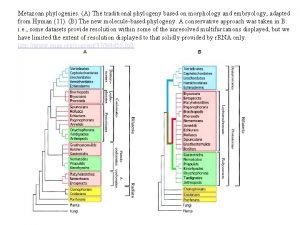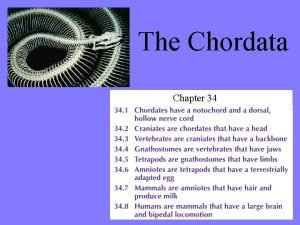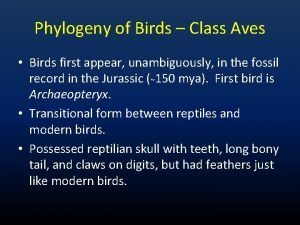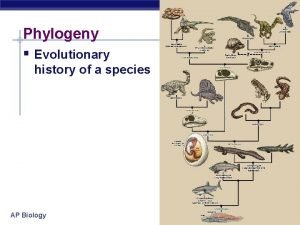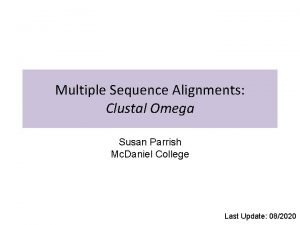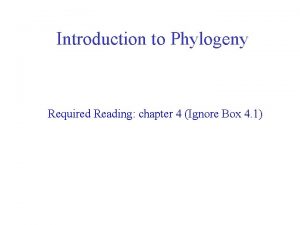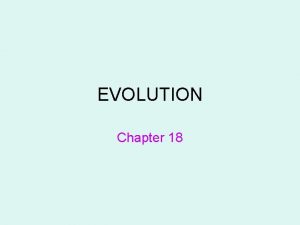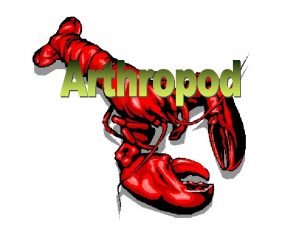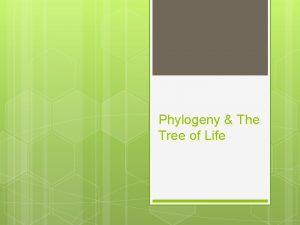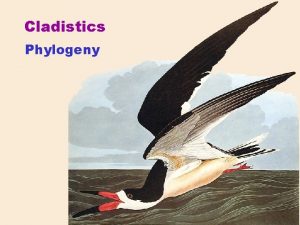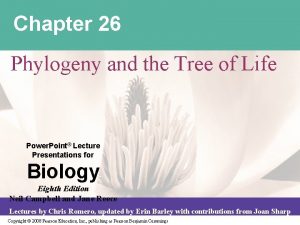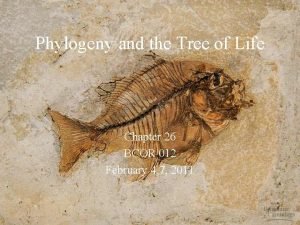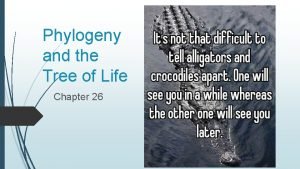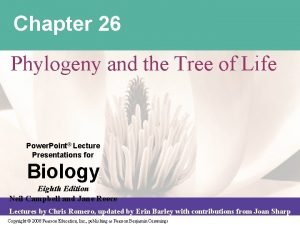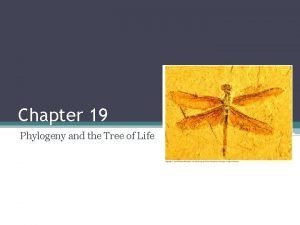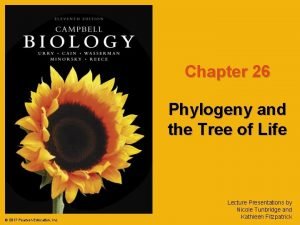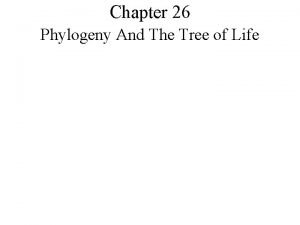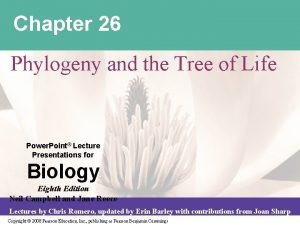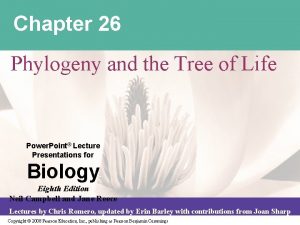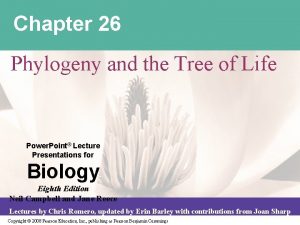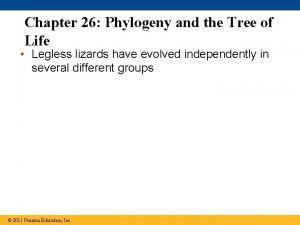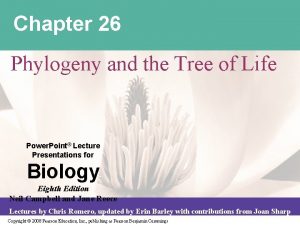Phylogeny the Tree of Life Chapter 26 Phylogeny

























- Slides: 25

Phylogeny & the Tree of Life Chapter 26

Phylogeny & Systematics � Phylogeny: ◦ Evolutionary history of a species or group of species ◦ Determined by evidences from fossil record, homologous structures, molecular homologies � Systematics: ◦ Helps us understand phylogeny (data analysis of phylogeny)

Phylogenies show evolutionary relationships 26. 1

Taxonomy �Grouping according to evolutionary similarities �Binomial nomenclature (Linnaeus) �Domains Species �Taxon (plural: taxa): named taxonomic hierarchy ◦ Ex: Panthera is the taxon at the genus level

Phylogenetic Tree �Links taxonomy and phylogeny �Branch points ◦ Divergence of two lineages from a common ancestor �Most recent common ancestor

How to read a phylogenetic tree

Phylogenies are inferred from morphological and molecular data 26. 2

Recall: �Homology ◦ Similarities due to common ancestry �Analogy ◦ Similarities due to convergent evolution

Morphology �Physical & DNA traits and genetics are homologous in organisms with recent shared common ancestors

Molecular Systematics �Uses DNA and other molecules to hypothesize evolutionary history

Shared characters are used to construct phylogenetic trees 26. 3

Cladistics �Science of constructing a cladogram

Cladistics �Clades ◦ Groups of organisms sharing a common ancestor

Monophyletic �A valid clade is monophyletic, it consists of the ancestor species and all its descendants

Paraphyletic �A paraphyletic clade consists of an ancestral species and some, but not all, of the descendants

Polyphyletic �A polyphyletic clade includes many species that lack a common ancestor

Species Change Over Time (Nodes)

Characteristics � Shared primitive character ◦ Homologous structure that is older than the branching of a particular clade from other members of that clade ◦ It is shared by more than just the taxon we are trying to define. ◦ Example – mammals all have a backbone, but so do other vertebrates.

Characteristics �Shared derived character ◦ New evolutionary feature, unique to a particular group ◦ Example - all mammals have hair, and no other animals have hair.

Ingroup & Outgroup �In: Group of study (make comparisons) �Out: Group that diverged prior to ingroup

New information continues to revise our understanding of the tree of life 26. 6

A Changing Approach to Classification of Life �New evidence means continued revision of classification ◦ Genome (DNA) sequencing

Tree of Life �Current classification: ◦ Three domains � 6 kingdoms

3 Domains First life on Earth

�Tree of Life Video
 Phylogeny
Phylogeny Chapter 20 phylogeny and the tree of life
Chapter 20 phylogeny and the tree of life Monophyletic grouping
Monophyletic grouping Chapter 26 phylogeny and the tree of life
Chapter 26 phylogeny and the tree of life Chapter 26 phylogeny and the tree of life
Chapter 26 phylogeny and the tree of life Chapter 26 phylogeny and the tree of life
Chapter 26 phylogeny and the tree of life Polytomy definition
Polytomy definition What is an outgroup in a cladogram
What is an outgroup in a cladogram Ingroup phylogenetic tree
Ingroup phylogenetic tree Protochordata
Protochordata Barnacle phylogeny
Barnacle phylogeny Kingdom plantae phylogenetic tree
Kingdom plantae phylogenetic tree Taxon phylogenetic tree
Taxon phylogenetic tree Animal kingdom cladogram
Animal kingdom cladogram What is a mammal
What is a mammal Cladistics
Cladistics Monophyletic group
Monophyletic group Phylogeny of invertebrates
Phylogeny of invertebrates Bryozoa
Bryozoa Shark class
Shark class Enantiornithes
Enantiornithes Ap biology phylogeny
Ap biology phylogeny Clustal omega alignment
Clustal omega alignment Plesiomorphy
Plesiomorphy Descent with modification definition
Descent with modification definition Closed circulatory system
Closed circulatory system
